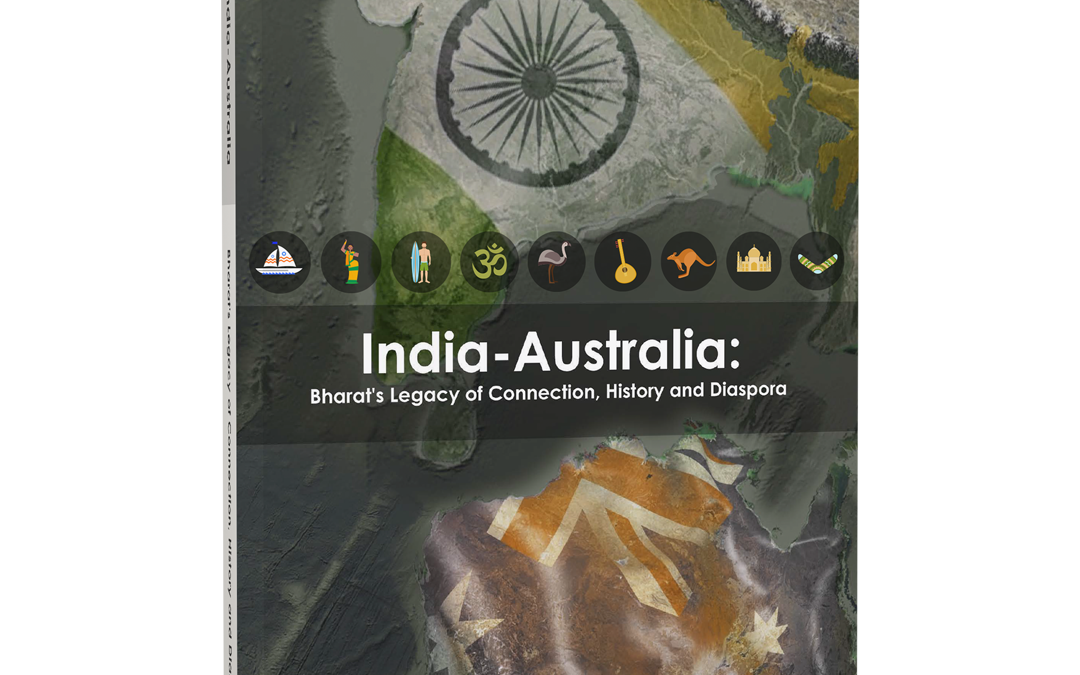
Advance praise for the book
Note by Bharat Gyan founders on ‘India-Australia book’
Dr.Hari and Dr.Hema Hari are the founders of the famous Bharat Gyan institution which imparts awareness of Indic civilization from last 25 years.
They have sent a note about the book which talks highly about the upcoming Book which is the first of its kind on Indo-Australia from an Indo-Australian perspective.
Note by Bharaygyan Founders- Dr.Hari and Dr.Hema Hari
This book “India-Australia, Bharat’s Legacy of Connection, History and Diaspora” by Shashi Holla straddling the history of Australia, especially from an Indo-Australian angle, across a wide time-span is one of its kind. The regional and cultural history of Australia has been a mystery too many for a long, because of the absence of a local narrative of its own indigenous history. Shashi Holla has tried to bridge this gap by drawing from the millennia long history of India, a parallel and ancient civilization. He is justified in using this parallel since.
- these 2 lands were once physically connected as part of a larger landmass called Gondwana today
- these 2 lands were once physically in contact due to the less known but well documented and evidence filled navigational prowess and history of India
- these 2 lands are even today, connected in their travails in many ways due to the similar shared history of colonial exploitation.
In this book, Shashi Holla has researched, compiled, and collated information from various disciplines and sources and presented them in an abridged, compact, easy-to-read manner, all in one place.
Shashi Holla has also brought forward the impact of the past to analyze current day situations in a larger context. It makes this book very relevant and relatable today. He has very astutely discerned and highlighted similarities and differences between colonial history and baggage of both India and Australia, as well as the influence of Indian civilization and its history on Australia.
It is interesting to read about the many towns in Australia that are named after towns and cities of India such as Mangalore, Lucknow, etc.. It is even more fascinating to read that the colonists chose Lucknow as the name for 2 towns in Australia where they went as part of the gold rush. The name Lucknow in India has its roots in the name Lakhanpur, named after Lakshmana the brother of Shri Rama. It morphed into “Lucknow” during British rule. But this English spelling of the name with “Luck” and “now” in it, would have served as a Lucky charm for those embarking on a gold rush and wanting to keep memories of their stay in Lucknow in India too. Interesting!
Shashi Holla has succinctly showcased how the nexus between colonial scholars, missionaries and merchants under the larger umbrella of imperialism, legitimized colonisation and enabled the colonizers to successfully rule the globe for a couple of centuries.
This book by Shashi Holla brings to fore such connects and influences and goes to show why India and Australia have many reasons to collaborate and celebrate together now, in many ways.
In our work in Bharath Gyan, when we speak of the geography of the Indian civilization and its propensity for prosperity due to its well defined rainy season, we stress upon how; it is the influence of the geographies of Australia and India which acts as the benefactor for these rains. The ties between India and Australia are thus very deep.
We are honoured to be writing a note for this book and also feel gratified to see our compilation on the Indian Civilization, having come of use in providing inputs to this work, as mentioned in the References.
While there is wonderful research happening across the world in many disciplines, there is also a dire need to compile and connect all the different research being done and records and evidence available across these disciplines and regions, to put together a composite picture of local and global narratives, which shows a convergence between the 2.
This corroboration will happen when the compilation is based on truth and facts and includes local perspectives. This effort is needed in order to be able to understand contemporary local situations all across the world and respond to them as per their own local historical and cultural context.
The world is vast, with many geographies and peoples and so are timelines and the history of each such region.
It has been hard to find sufficient documentation on Australia from an Indo-Australian perspective across the times. Shashi Holla’s book is a good attempt to fill this void. We wish him the very best for reaching out this book to as many readers as possible, both within and outside Australia and India, and to bring out more such works in the future, too.
Dr. D.K.Hari & Dr.D.K.Hema Hari
Bharath Gyan, Chennai
India
02 Aug 2024
